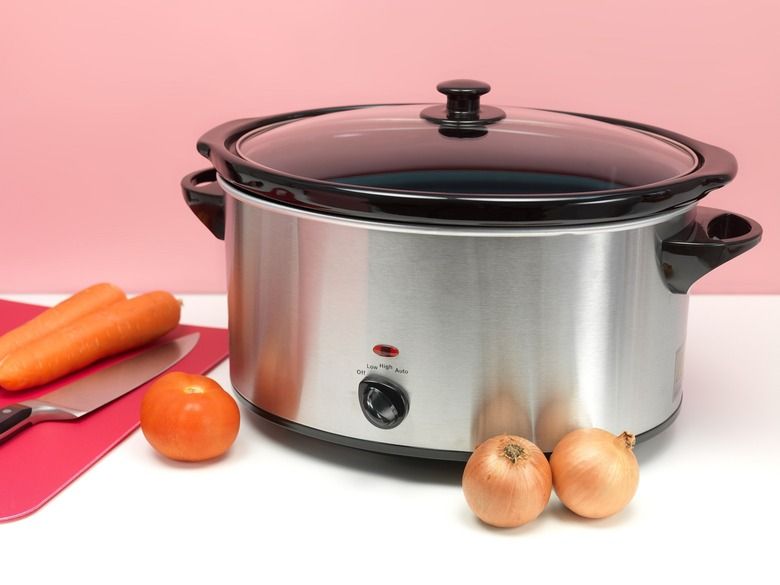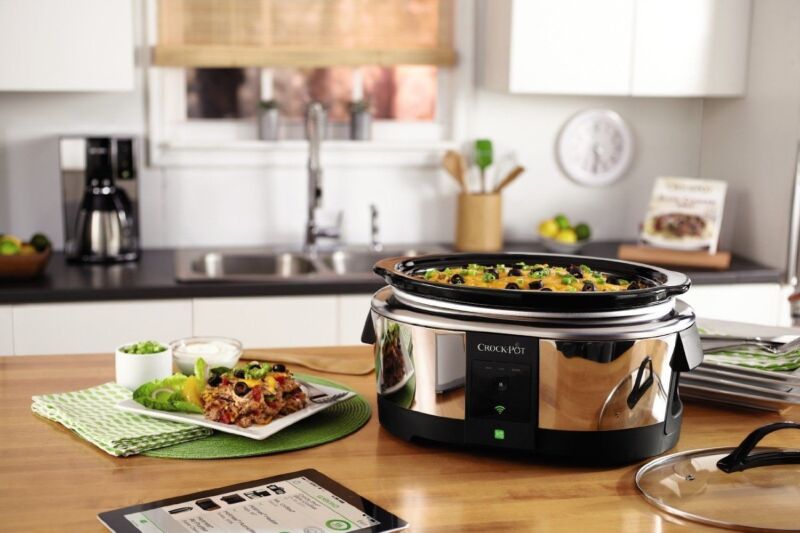Slow Cooker Settings: A Guide to Temps for Perfect Results
If you own a slow cooker, you know how convenient these handy kitchen appliances can be. I simply throw in the ingredients, set the temperature, and let the slow cooker work its magic while I’m at work or running errands. But with so many models and features available, it can get confusing figuring out the right temperatures and settings.
In this comprehensive guide, I’ll explain the various slow cooker temperature options, talk about safe food temperatures, and provide tips on using your slow cooker properly. By the end, you’ll be well-versed on getting the most out of your crockpot!
How Do Slow Cookers Work?
A slow cooker, also called a crockpot, cooks food at low temperatures over an extended period. This long cooking time tenderizes tougher cuts of meat and allows flavors to meld deliciously. The direct heat from the bottom slowly warms the contents, while the tight-fitting lid traps steam to prevent moisture loss. This moist environment ensures food stays tender and juicy.
Slow cookers are available in a range of sizes, from 1-quart models for dips up to 8-quart for larger roasts or batches of soup. While styles may vary, the key is low heat over time to create comfort food with little effort. Set it and forget it!
Slow Cooker Temperature Settings
One of the handiest features of a slow cooker is the ability to choose different temperature settings. Here’s what each one means:
Low Setting
The low or “Lo” setting maintains an internal temperature around 190°F. It provides very gentle warming that’s ideal for keeping dips melted, cooking bone broth overnight, or preparing more delicate recipes. The low setting avoids overcooking.
High Setting
The high or “Hi” setting brings the internal temperature up to 280-300°F, perfect for simmering chili, soups, or stews. This higher heat sufficiently cooks meats and vegetables in a reasonable timeframe.
Medium Setting
Many newer slow cookers have a medium or “Med” setting in between low and high. This offers flexibility, heating food to approximately 230-250°F. You can start a recipe on medium before lowering to low to finish cooking without overdoing it.
Warm Setting
Once cooking is complete, some slow cookers automatically switch to a warm setting that maintains an internal temperature of 165-170°F. This keeps food ready to eat without allowing bacteria growth.
Exact temperatures may vary slightly depending on the size, model, and age of your slow cooker. Follow your specific manual for accuracy.
What is Considered a Safe Food Temperature?
When cooking meat, poultry, and other foods, it’s critical to reach a high enough internal temperature to kill off any dangerous bacteria. According to the FDA Food Code, food is safely cooked when it reaches an internal temperature of 165°F for 15 seconds.
For large cuts of meat like roasts and whole poultry, the USDA recommends slightly lower minimum temperatures since the meat will retain heat and continue cooking after removal from the oven or slow cooker.
- Beef roast – 145°F
- Pork roast – 145°F
- Lamb roast – 145°F
- Turkey and chicken – 165°F
As long as you follow manufacturer guidelines, modern slow cookers will bring food up to safe temperatures. Avoid the “danger zone” between 40-140°F where bacteria multiply rapidly.
Slow Cooker Usage Tips

Now that you understand slow cooker settings and safe food handling, let’s go over some best practices for success:
Prep Work is Key
Always start with clean equipment, utensils, hands, and surfaces. Wash produce. Pat meat dry for better browning. Cut ingredients uniformly for even cooking.
Don’t Cook Frozen Meat
Use fully thawed or fresh meat and poultry. Frozen will take too long to come up to the proper internal temperature.
Sear Meat First
Browning meat before slow cooking enhances flavor and appearance. Do this in a skillet on the stovetop.
Preheat and Lift to Jump Start
For quicker heating, preheat your slow cooker with hot water or broth, or use the max setting for the first hour. You can also place a metal trivet or foil balls beneath the inner pot to lift it and encourage air flow.
Maintain Moisture
Cook with a liquid like broth, tomatoes, or even water. Add diced vegetables like onions, carrots, and celery which release moisture.
Don’t Overfill
Follow your manual’s fill lines, usually 1/2 to 3/4 full. Too much food prevents proper heat circulation.
Check Food Temperature
Use a food thermometer to ensure the internal temperature reaches 165°F. Check in multiple spots.
Keep the Lid On
Avoid lifting the lid during cooking to prevent heat loss. Glass lids make it easy to peek inside.
Place Vegetables Strategically
Put quick-cooking vegetables like spinach or broccoli near the top or sides where heat disperses more. Hardier veggies can go near the bottom with the meat.
Ensure Proper Reheating
Only reheat fully cooked leftovers once in the microwave, oven, or stovetop to 165°F before transferring to a preheated slow cooker set on low to keep warm. Do not reheat food more than once.
Don’t Let Food Cool In theCooker
To prevent bacteria growth, transfer cooked food to shallow containers for quick cooling in the refrigerator.
Follow these useful tips and your slow cooker adventures will be healthy, safe, and delicious!
What Exactly is a Slow Cooker?
Also called a crockpot, a slow cooker is a countertop electric appliance with a heating element, metal housing, and glazed ceramic or stoneware insert designed to cook foods slowly at low temperatures.
Benefits of using a slow cooker include:
- Ability to prep ingredients in the morning and cook all day unattended
- Tenderizes inexpensive tougher cuts of meat
- Minimizes kitchen time for busy families
- Energy efficient and cost effective
- Perfectly cooks soups, stews, roasts, and more
The indirect heat and steam created within the covered pot gently brings food up to the perfect temperature. Continuous low heat kills bacteria more effectively than quick high heat cooking. With minimal hands-on work, slow cookers yield comfort food with big flavor.
The Bottom Line
Modern slow cookers are a safe, healthy way to prepare home cooked meals with ease. By following the manufacturer’s instructions for filling, temperature, and cooking times, your appliance can do most of the work. While quick high heat can burn and dry out food, low slow cooking tenderizes meats, melds flavors, and provides convenience.
Refer to your model’s manual and adhere to the recommended settings for preparing recipes. This ensures your slow cooker will reach and maintain proper internal temperatures. With so many options for cooking temperatures, prep steps, and features among brands, following the provided guidelines is key.
In Summary
I hope this comprehensive guide gives you confidence using your slow cooker and helps you optimize the various temperature settings. Now you can take advantage of the convenience and versatility of slow cooking while safely preparing healthy, delicious meals for your family.
Thanks for reading this in-depth overview on getting the most from your slow cooker! For more tips and recipe ideas, be sure to check out my other articles on slow cooking techniques. Enjoy your adventures in meals-made-easy with your crockpot.
